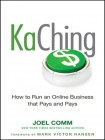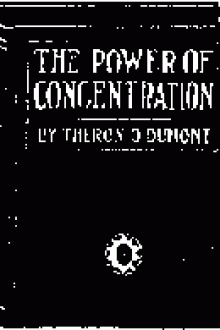KaChing: How to Run an Online Business that Pays and Pays Comm, Joel (books for 8th graders txt) 📖

Book online «KaChing: How to Run an Online Business that Pays and Pays Comm, Joel (books for 8th graders txt) 📖». Author Comm, Joel
That sounds like a terrible waste, so Kevin Houchin came up with a number of other options. One was to wing it. The FTC has to prove that your advertising is misleading, and that’s not going to be easy to do. Before the FTC attorneys go through all the hassle of launching a court case, they’ll send warnings asking you to change the advertising copy. That’s one option, but it’s not the best.
Alternatively, you can do what the FTC wants you to do. It wants you to use testimonials that reflect typical results, and to be able to produce evidence that those results are typical.
So before your launch, you could hand out samples to a representative number of people. Ask them to use the product and tell you the results. Collect testimonials from everyone, and use the responses that reflect the average results. You can also ask a market research firm to do this work for you.
That’s worth doing in any case. It will give you valuable insight into the effectiveness of your product. But it’s slow work; it might be expensive (especially if you’re using a market research firm); and it still makes using your very best testimonials difficult, because those won’t be typical. The FTC states:
[I]f the advertiser does not have substantiation that the endorser’s experience is representative of what consumers will generally achieve, the advertisement should clearly and conspicuously disclose the generally expected performance in the depicted circumstances, and the advertiser must possess and rely on adequate substantiation for that representation.
So you could use that great testimonial, but you’d have to explain afterward what most people actually achieve and have the evidence to prove it. Consider the following testimonial:
Since reading “Make Money with Knitting,” sales of mywoolen sweaters have added two zeros to my income!I now make $12,000 a month selling my knitwear. I’vegiven up my teaching job and knit on the deck of mybeach house in Cancún.
—Jane Smith, Owner, Knitwear, Inc.
If you used this, immediately after it you’d have to add:
“Most knitters who used these strategies saw increases of at least 12 percent.”
That’s not terrible and using “at least” does allow you to show that there is room for buyers to do better, but it does show that your best-case scenario isn’t the one that buyers can typically expect.
Kevin came up with a great idea that allows marketers to use both their best testimonials and the typical results that the FTC wants. Instead of presenting the best results as a testimonial, you use them as an example of what’s possible and explain what the customer did to achieve those results. If the account makes clear that the results are exceptional and not typical, the FTC has no problem with it.
So instead of using the previous (verbatim) testimonial by Jane Smith and qualifying it with the necessary disclaimer (i.e., “Most knitters who used these strategies saw increases of at least 12 percent”), you could write something like this:
Jane Smith’s Story
In September 2009, Jane Smith had just about given up hope. She’d been knitting for almost 20 years and had been selling her sweaters, scarves, and gloves online for almost 2 years, but she’d never earned more than $120 a month in revenue.
“I was just about ready to give up,” she says. Within just six months of using the strategies in “Make Money with Knitting,” though, Jane’s revenues rocketed to $12,000 a month. She’s since sold her studio apartment and now knits from her beach house in Cancuń.
How did Jane create her dream life?
Jane did three things that massively boosted her income.
• She created an entirely new range of knitwear products. (We explain how to do that in Chapter 3—“Creating Novelty Knitwear Products.”)
• She created unique sales pages for her best-selling items (Chapter 6—“Building Sales Pages That Sell.”)
• And she leveraged her friends and family, used social media to build a brand, and managed to put her items in stores across the country.
All of those actions, together with her dedication, hard work, and her amazing designs, enabled Jane to boost her business and turn her passion for knitting into a six-figure income.
As far as the FTC is concerned, the details in the description should be enough to show that the results are specific to Jane and not typical of customers as a whole. It’s the difference between a testimonial that says, “After drinking two weight-loss shakes a day for six months, together with diet and exercise, I lost 110 pounds,” and one that says, “Every day, I drank two WeightAway shakes, ate only raw vegetables, and exercised vigorously for six hours at the gym. By the end of six months, I had gone from 250 pounds to 140 pounds.” That’s the example of a fair testimonial supplied by the FTC.
A description like this doesn’t just meet the FTC’s requirements, it also brings to life what your product can do. It makes your testimonials a little more human, and that’s not a bad thing at all.
In practice, I think we’ll find that marketers are going to respond to the FTC in a number of different ways. Some, no doubt, will ignore the new guidelines and continue in their old ways, at least until they get a letter suggesting that they’re in trouble. Certainly, there are going to be lots of old sales letters on the Web that were written before the new guidelines and haven’t been updated.
Many will do what the FTC wants and put up their best testimonials with a rider pointing out the typical results.
And some—the smart ones, perhaps—will turn their best testimonials into detailed stories.
TRANSPARENCY
The other issue that Kevin highlighted concerns transparency.
The FTC feels that if you’re recommending a product, and you’re earning money from the sale of that product, buyers should know that you have





Comments (0)